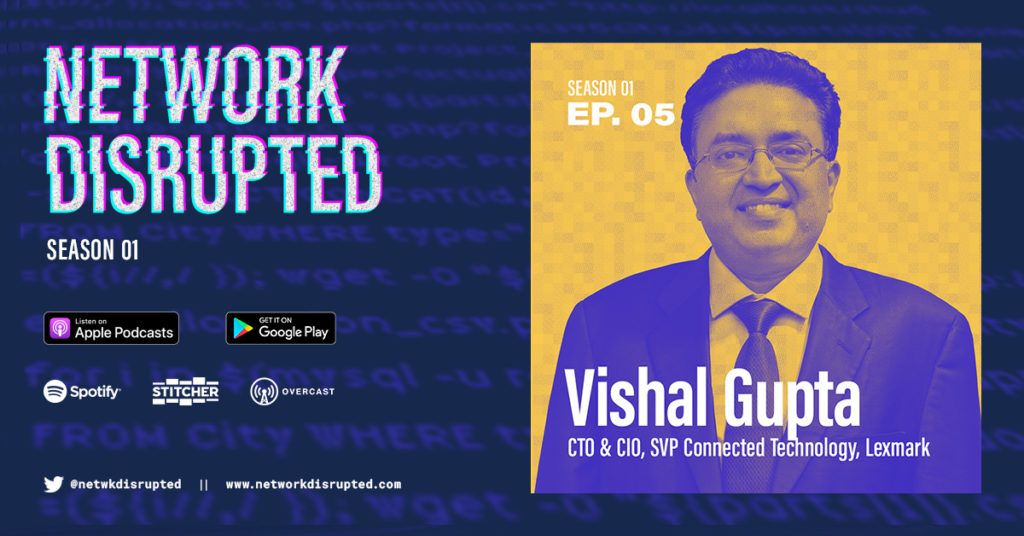Lexmark CIO & CTO on recognizing the right use cases for AI
Lexmark CIO & CTO Vishal Gupta wades through the murk surrounding AI, explaining what tech organizations should know when deciding whether to adopt it.

Artificial intelligence (AI) can help organizations with digital transformation, strengthen their security posture, and unlock operational efficiencies. But that assumes it is leveraged properly.
For all its benefits, AI can be overhyped and misunderstood as well.
In the first season of the Network Disrupted podcast, Vishal Gupta, CIO and CTO of Connected Technology at Lexmark, willingly wades into the murkiness surrounding AI and explains what technology organizations should know to make more informed choices about its adoption. He also details the program he created at Unisys to engage engineers in continued learning about new fields like AI.
Below are his insights that he shared with host and BlueCat Chief Strategy Officer Andrew Wertkin.
(Mis)understanding AI and what it can and can’t do
AI is a very broad term and can mean different things to different people. Uses can range from a catch-all buzzword, to carrying an association with neural networks, to even erroneously mixing it up with machine learning.
It’s no wonder it’s hard to get on the same page about it, let alone make the best use of it.
According to Gupta and Wertkin’s examples in the episode, it’s best to discuss AI in specific, use-case-based terms. Just like Jon Macy at Cerner ensures projects are requirements-based, fully documenting and understanding the use case leaves less room for misinterpretation.
Gupta shares one of the more compelling and specific use cases for AI in cybersecurity. AI’s classification and comparison capabilities, which are fairly well-developed, can be used to apply security policies to a range of digital equipment.
On the flip side, Wertkin pointed out, it isn’t always necessary to use AI to strengthen one’s security posture. Even more simple logic-based decision trees can be used to help secure devices on a network.
Keep in mind, Gupta warns, that AI-based decision-making isn’t a panacea. Depending on the data that the machines learn from, AI can learn to make biased decisions, miss valuable context, or plainly make the wrong call.
More data is not always better
AI needs to be taught how to properly make decisions and distinctions, using good data—and lots of it. It’s a good time for that, given that enterprises can collect more data than ever before.
Except, every organization has struggled with thoughtful data gathering. It’s easy to collect data with good intentions only to quickly start drowning in it.
Gupta advises taking a few steps back. It’s not about gathering all the data. It’s about identifying use cases and then working to gather the right data that supports the use case.
Do-able ways for engineers to learn AI skills
To get to the point where Unisys could experiment with and adopt AI technology, the 100-year-old company had to undergo some serious digital transformation efforts. To accomplish that, Unisys paid special attention to what matters most: its people.
Gupta helped Unisys look for ways to build up their engineers in a manner that also supported the business’ goals.
The resulting approach was five key competency-based learning tracks for more than 2,000 engineers across the six technology centers where the engineers are based. Gupta worked with teams to develop content and then encouraged engineers to pursue the tracks that interested them.
Each of the learning tracks took eight hours to complete. Gupta initially estimated that an engineer could finish one every other month. Instead, within the first year of deploying the learning program, Gupta found his engineers completed all five tracks within an average of just seven months. To him, this meant his teams were indeed hungry to learn and grow with the business.




